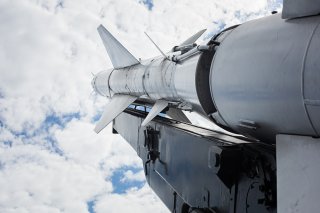Assessing North Korea’s Nuclear Intentions
North Korea’s willingness to denuclearize depends on the balance of power between China and Russia.
The chances that North Korea will give up its nuclear weapons are slim. Understanding why requires recalling what may have motivated Pyongyang to stop reprocessing plutonium in 1992, then shut its nuclear reactor, halt construction of a larger reactor, store its plutonium-laden spent fuel in a cooling pond, and allow around-the-clock international monitoring from 1994 until 2002—at a time when it had no nuclear weapons.
During the Cold War, North Korea’s fundamental strategy played off the Soviet Union against China to ensure some freedom of maneuver in securing its autonomy and developing its economy.
In 1988, observing China’s turn down the capitalist road and anticipating the breakup of the Warsaw Pact and the Soviet Union, Kim Il-sung reached out to the United States, South Korea, and Japan. He did this hoping to hedge against a rising China and limit his nation’s economic dependence on Beijing. Kim and his successors hoped for a fundamental change in relations with Washington, opening the way to economic engagement with South Korea and Japan. To that end, he was willing to suspend his nuclear program and test Washington’s willingness to end hostility. DPRK representatives even suggested allying with the United States. If enmity ceased, they hinted, U.S. troops would no longer pose a threat and might remain on the Korean Peninsula, perhaps as peacekeepers in the DMZ.
From Pyongyang’s vantage point, the key to the 1994 Agreed Framework was a mutual commitment “to move toward full normalization of political and economic relations.” (That was also the key to its 2002 Pyongyang Declaration with Japan, which committed the two sides to “establishing a fruitful political, economic and cultural relationship”) The two light-water reactors symbolized the end of enmity in two ways: Washington was unlikely to provide nuclear reactors to an enemy, and the reactors would require deep engagement with Americans not only in providing nuclear fuel but also in operating and maintaining them.
Few in Washington have ever accepted this interpretation of Pyongyang’s motives. Most officials and experts believed North Korea was determined to arm itself with nuclear weapons and that only China had enough influence to persuade it otherwise.
When Washington was slow to implement the Agreed Framework, Pyongyang, in 1997, began seeking the means to enrich uranium and attempted to launch a satellite in hopes of reengaging with Washington. It did not restart its plutonium program until after the Bush Administration renounced the accord in 2002. Its subsequent steps similarly had this double purpose: to improve its weapons capabilities while pressuring Washington to resume nuclear diplomacy to end enmity.
That North Korean strategy came to a close after President Donald Trump walked away from the Hanoi summit. Without any prospect of ending enmity with Washington, Pyongyang had no motive to curtail nuclear arming. Instead, it reverted to its Cold War strategy of playing off a revived Russia and a greatly strengthened China. It is unlikely to reconsider that course unless the Russian army in Ukraine were to collapse, weakening its counterweight to China.
Leon V. Sigal is the director of the Northeast Asia Cooperative Security Project and author of Disarming Strangers: Nuclear Diplomacy with North Korea. He and other former U.S. officials participated in numerous Track II meetings with the North Korean government.
Image: Shutterstock.

